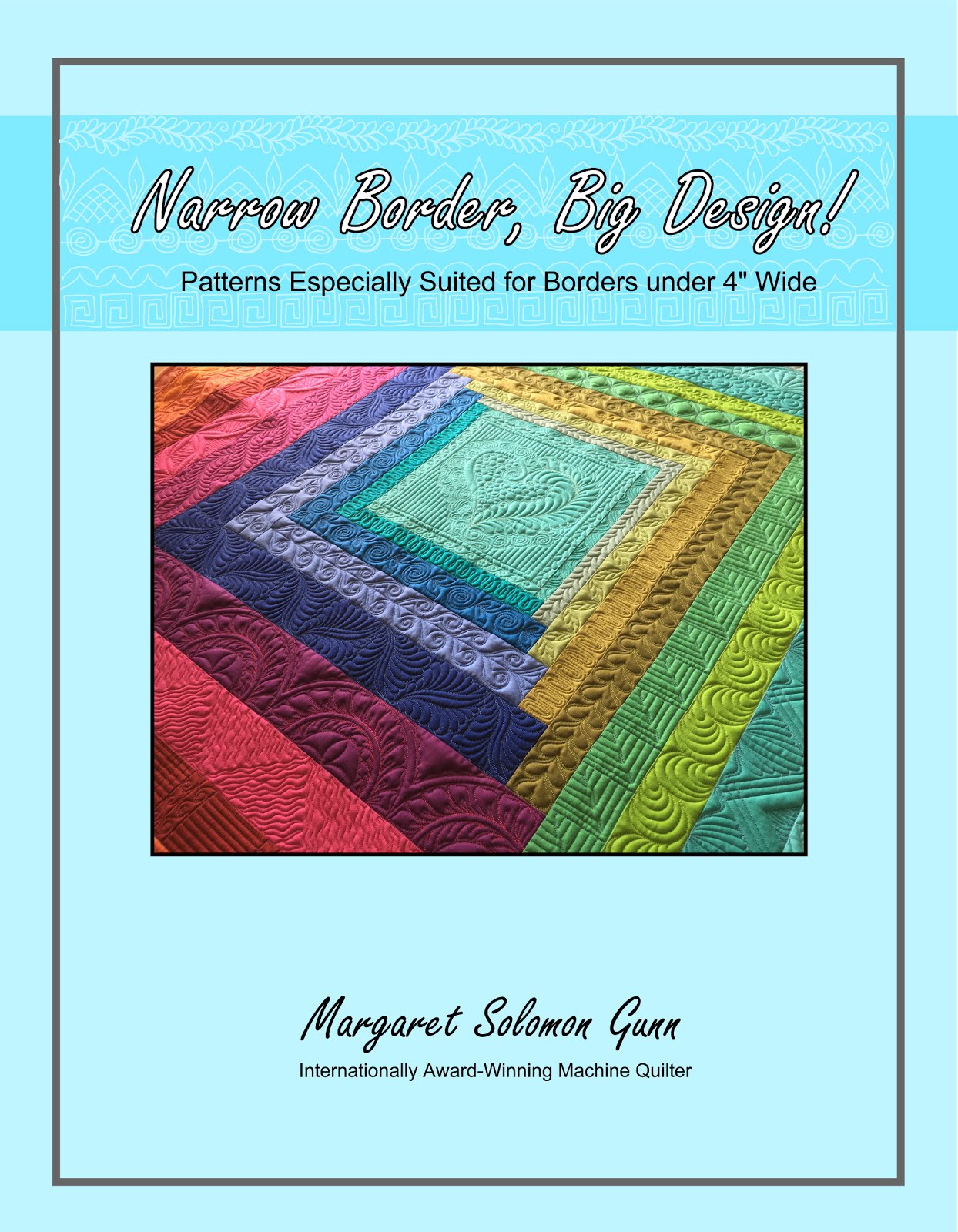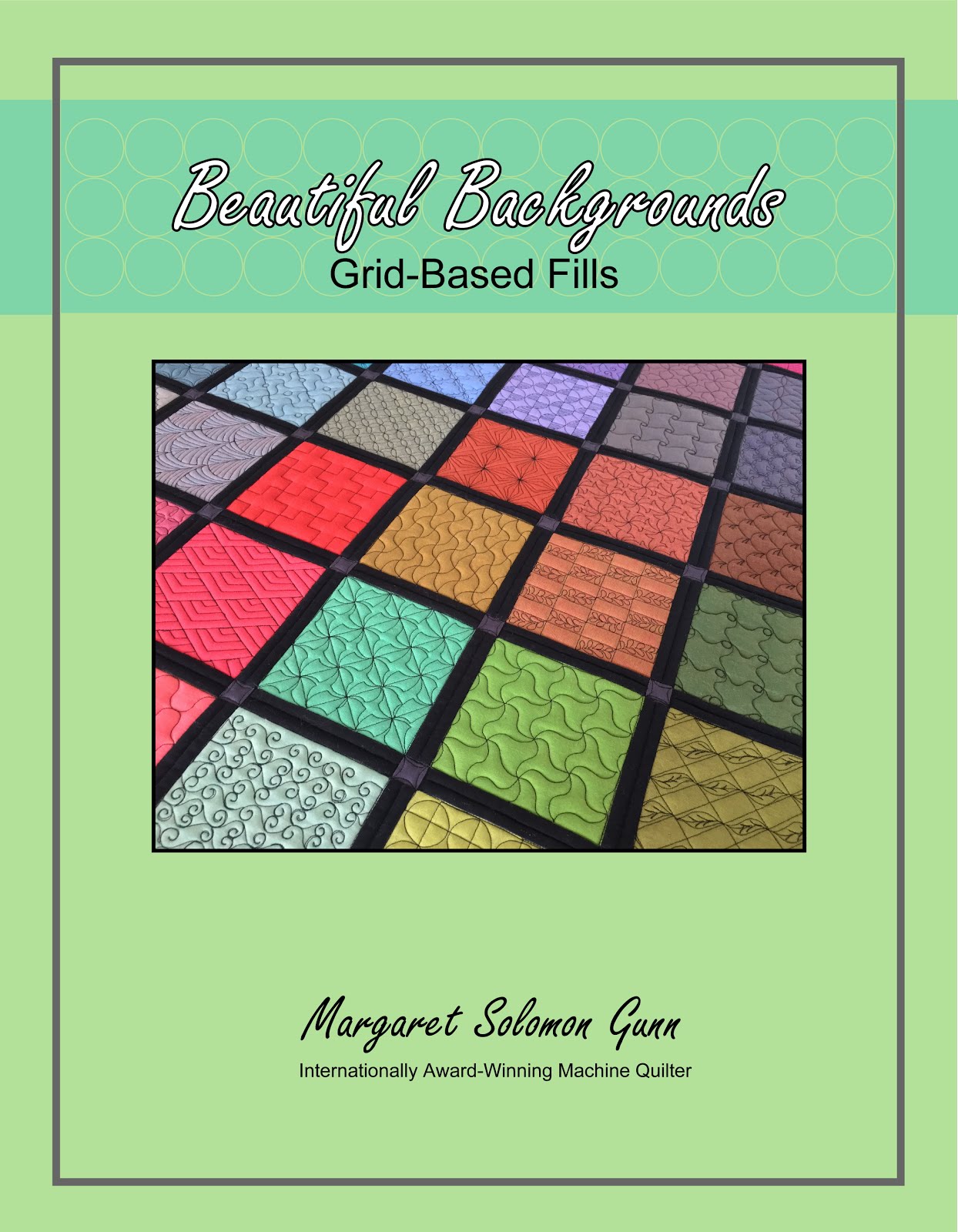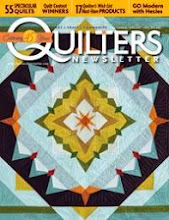I have the very distinct benefit of getting to see many quilts -- many more than your average hobby quilter sees. I attend several quilt shows each year, probably on the order of 6-10. On top of that, I quilt for people, and get to see (give or take) a hundred or more quilts each year. The vast majority of quilts are good, but the more you see, the more you are able to tune into areas that tend to cause difficulty. One such area I have witnessed is when a quilt requires a narrow sashing. I happen to be adding these to a quilt I am currently making, so I thought I'd step through my process of attaching narrow sashings in hopes that this gives some help to anyone that does them differently, or with less success.
I have these pieced half-squares (half of a star block) that I layed out with a narrow sashing, and decided it looked great. It's not really a sashing or a border, but they can all be dealt with similarly. It is just a different name that we call it.
First off, my block is paper pieced, and I have removed the papers. There are some quilters that leave papers on before they have attached the piece to it's next unit, but I personally prefer not to have all those layers of paper in my seams. I have cut the aqua pieces to be on-grain along that edge, so they shouldn't stretch. Additionally, I am an avid starch-worshipper. This block has considerable structure and would take good pulling to distort.
Here is what my finished unit will look like. The red sashings will be 3/8" wide when this is finished. There is no room for error, as slight wobbles on that bold red will undoubtedly show.The first thing I did is this. Before the red strips were even cut, I starched the fabric twice. This prevents it from shifting and stretching right from the start. I then took great care to cut 7/8" strips. Here is where my actual technique will deviate from what I will tell anybody. In actuality, you should be instructed to cut these red strips to a fixed length prescribed by your pattern or design. I have clearly oversized them instead. By cutting them to the correct length initially, you don't inadvertently stretch the piece when it is applied. Have you ever made or seen a quilt with many borders and by the time the last border is stitched on, the quilt is about 4-5" larger than it is supposed to be?...I do see this, and they are a challenge to quilt because they don't stand a fighting chance of laying flat.
That said, because my pieces are starched well, and because I do take tremendous care not to stretch the pieces, then will lay flat. I say that confidently. The other thing I do (above) is I pin judiciously. This keeps the red sashing from stretching and keeps perfect alignment of these two pieces. Don't skip the pins even though it seems simple enough to sew without them.
This seam looks pretty straight. I gently press this open, then attach the next red sashing with pins and sew. Here it is.
Before the next paper-pieced triangle units are added, one thing I did do was stay-stitch around the edges. I did have some bias on these units. I did the stay-stitching BEFORE the paper was removed. Stay-stitching after removing paper will cause a mess. (unless you like ruffly edges and stretched pieces). Nah, didn't think so.
Next the stabilized, paper-less unit is well pinned to the red sashing. I may have pinned on this side...
But as you can see, I have chosen to sew it with the red side facing up. There is method to my madness. By having the seam facing upwards (the blue seam below, from when the sashing was initially sewn on), it doesn't wreak havoc on the controllability of the piece as it feeds through the machine.
Press it open, and prepare to sew the other triangle.Other triangle...sewn and pressed. I give the unit a gentle starching and pressing too.
My seam is pretty straight, and of a uniform width.
Are you wondering where these units are going?...I posted some design ideas here, but have moved ahead with one of the designs. It's busy, and these fabrics have print to them so quilting will be interesting. Despite my clear distaste for paper-piecing, though, I am making headway with the top. It is an easy thing to stitch on for 30 minutes or so each day if I have finished other client obligations. It's not like the applique quilts I have made in recent years that I stitch by hand, and mostly at night.
But, because this is mid-November, all of my show quilts have now come back home to me (for many months I had more than half of them away at any given time). And they need their flat palate on the floor for storing. I just don't like to store them all folded up in a box. So, time is of the essence to get these 14 pieces put together so it can be moved.
On Friday, as things were progressing nicely, I more or less decided that something was just wrong. I hated the way the center star looked...more specifically the part within the mariner's star. Here's my original center... I thought that since the green was a dominant quilt color, I wanted it. I also thought that I would like the red to pull the eye to the center of the quilt (the outer border of the quilt has a considerable amount of red.
Long story short, rather than hand stitching the center to the Mariners, staring at it for the next 2 months and hating it, I chose to pull more fabrics and try making another center. It's not exactly a fun or fast unit to make either. It has silk pieces, and a dozen hand pieced arcs. Nevertheless, the 2nd effort is liked much better.
Happy Sunday Quilting!











3 comments:
Great advice about the starching. The bias edges are tricky. Do you have a favorite brand of starch? Chris
Excellent. Thanks for sharing such great info. I think I need to start starching;) Is there a type of starch that you have found works better than others?
Thank you for the tutorial, I hope to put hits learned to good use on a few quilts of my own.
Post a Comment